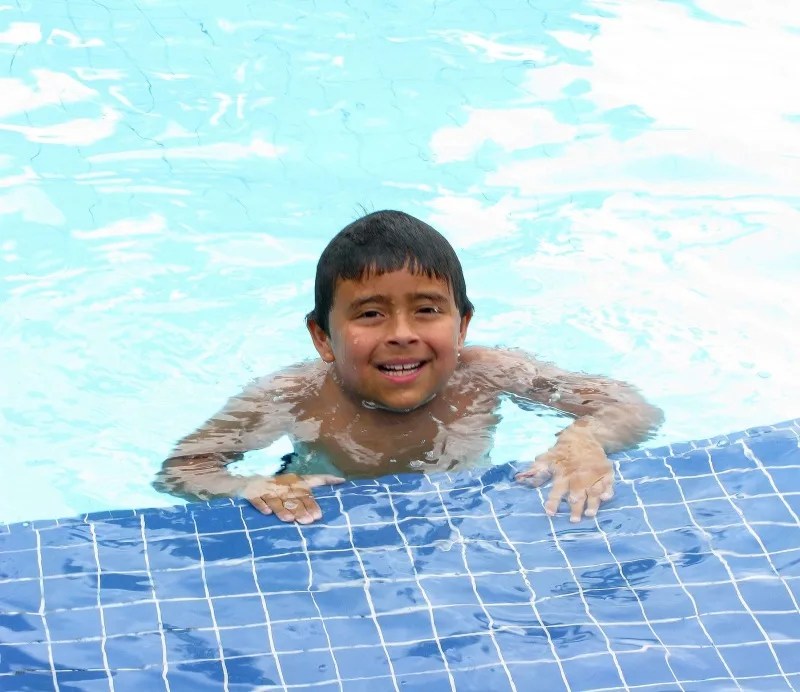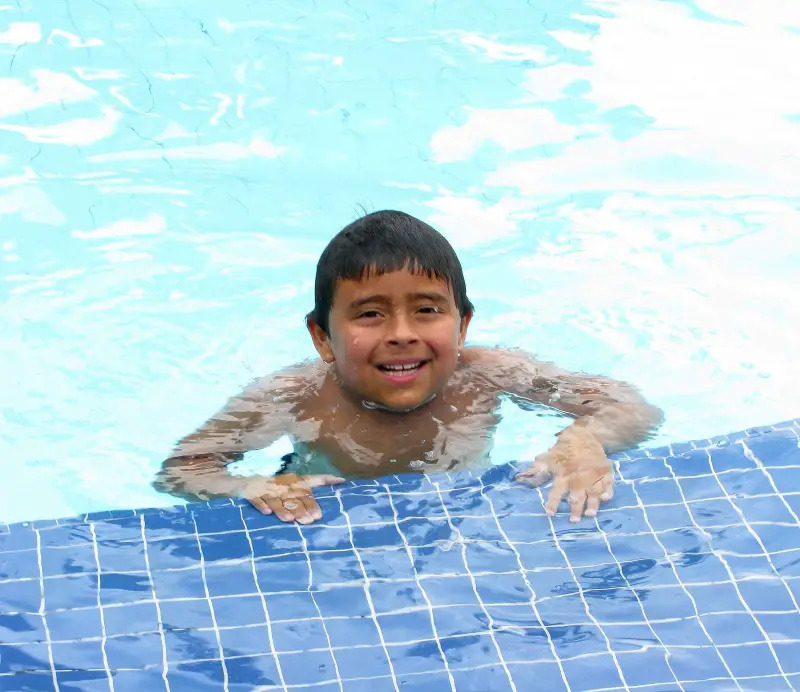Water safety is crucial for all children, especially those with special needs, as drowning is the leading cause of death after a person with autism wanders from safety. We’ve gathered helpful information and tips to help children with special needs learn to swim and achieve safety and independence in the water.

Drowning is currently the leading cause of death after a person with autism wanders from safety, a tendency that was recently found to occur in nearly half of individuals with autism, according to Autism Speaks. Teaching those with autism, other cognitive disorders, and physical disabilities to swim while emphasizing the importance of water safety can play a critical role in preventing such tragic incidents from occurring.
Generally speaking, teaching most children with special needs to swim is not all that different from teaching normally developing children, says Kirt Smith, physical education teacher at Phyllis L. Susser School for Exceptional Children in Flushing, Queens.
Swimming lessons help kids with special needs in a number of key areas, including greater muscle tone and physical endurance, increased flexibility, better self-control, and, in many instances, improved behavioral outcomes. It is critical, especially for children with autism, to become comfortable around water—but remember, warns the National Autism Association: Teaching your child how to swim does not mean your child is safe in water; it means he is safer.
- Be patient. The first hurdle is usually the same for all kids: “That initial fear of going into the pool and being alone in the water—you even see it in adults who don’t swim,” Smith says. The key, he says, is to give a child time and to let him conquer that fear at his own pace. “We have a student named Reggie who, two or three years ago, began swimming lessons and had an extreme phobia of going in the water. He sat on the pool steps for about four or five months and wouldn’t move. And then all of a sudden, for various reasons, he felt okay, and we got him in the pool and he learned how to swim within the month. Now he’s an excellent swimmer.”
- Offer moral support. One way instructors and parents can help ease a child’s fear of the water is to offer ongoing support. “When they get in the pool, I keep telling them over and over that they’re safe, and that nothing is going to happen to them,” Smith says.
- Make it fun. If a child enjoys being in the water, she’ll be more comfortable. “They have to be able to splash around, and to do the things all other kids do in the pool,” Smith says. While you should watch your child at all times, you should also allow him some freedom to have fun in the water, not just focus on learning.
- Use floaties. To keep kids safe while they’re learning to swim, or if they have a physical limitation, Smith advises the use of a flotation device, such as a life vest or water wings. “Probably 60 to 70 percent of learning to swim can be done through the use of a flotation device,” he says.
- Talk to the teacher. Talk to your child’s swim instructor, Smith says, to better understand your child’s strengths and weaknesses in the water, so you can safely swim together outside of class. Smith recommends swimming with your child once he or she is able to handle deep water. “Make sure that when they jump in the water over their heads, they’re completely capable of swimming back to shallow water or getting to a ladder,” he says. “Make sure they’re almost over-qualified in deep water.”
- Seek out specially qualified swim programs. If your child has multiple disabilities, is in a wheelchair, or is nonverbal, it is critical that you enroll her in swimming lessons with an instructor who has been specially trained and has experience dealing with children with special needs. A program director, teacher, or questionnaire should ask parents such questions as how your child best communicates (is it with picture systems, praise, hand-over-hand guidance?) and what sensory tools might be helpful to your child. Adaptive life jackets or equipment should also be on hand if necessary (be sure to ask in advance).
Be Inspired
See a video from Real Look Autism on how Daniel, a nonverbal child with autism, has (over the course of six years) learned to swim, float, and have fun in the water through specially tailored lessons. You’ll see how his instructor uses PECS, a picture exchange communication system, to communicate with the boy; how consistency from lesson to lesson is key; and how what a child learns in the water can have an impact in his or her everyday life, too. For example, the instructor says: “So many children with autism cannot blow their nose… We have lots of children who, once we tell them how to blow bubbles under water, they can now actually blow their nose on land.”
Making Waves
Autism Speaks created a Swimming and Water Safety Scholarship Fund in 2014 in response to the growing number of drowning incidents in the autism community. More than $37,000 was awarded to 15 local organizations that provide qualified swimming and water safety lessons specifically for individuals with autism. Each organization, including SNACK Swim Program in Manhattan’s Midtown East and Swim Strong Foundation in East Elmhurst, Queens, received up to $2,500 in funding.



















